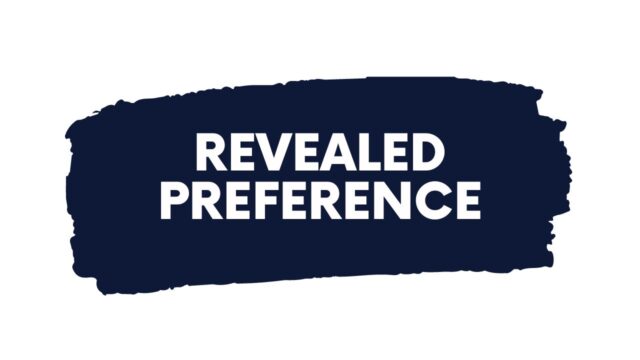
Many people have a poor understanding of their motivations and values. They will say that charm pricing is stupid, and may round up prices in their head. These people have no idea what they really value. But if you know them well, you can use revealed preference to make a better decision about the purchase of a charm. In this article, we’ll review the theory of revealed preference and discuss examples of how it can be used. This article also discusses the limitations of stated preference surveys, and give some examples.
Limitations of stated preference surveys
Stated preference surveys have long been controversial among non-market methods. In this special issue of Health Economics, the authors describe the advantages and limitations of stated preference surveys. They argue that these methods are a legitimate alternative to market research, particularly in situations when revealed preferences cannot be measured. This paper reviews some of these limitations and describes an alternative approach that can improve the quality of stated preference studies.
A major limitation of stated preference surveys is the lack of ability to distinguish between individuals’ motivations. Although the motivation of respondents may differ across people, some factors may be more easily discernible, especially if the process is transparent to the respondents. However, screening methods are expensive and risk fatiguing respondents. Hence, the next step would be to design a brief questionnaire. The following examples show the advantages and limitations of stated preference surveys.
The second limitation is the fact that the respondents’ choice is subjective. The respondents are not unbiased and their responses may be influenced by hypothetical bias. For example, respondents were asked to state their WTP to reduce the risk of chronic illnesses or acute illnesses. However, this research method was a significant improvement over other methods in the field, and these surveys can reveal hidden values of non-marketed goods and services. So, while stated preference surveys have their limitations, they are a valuable tool for policymakers.
Slutsky theorem
The Slutsky theorem states that a demand function satisfies SARP if it satisfies Slutsky symmetry. However, revealed preference literature does not provide a way to construct the utility function, making empirical testing difficult. Instead, it uses a negative semi-definiteness property of the Slutsky matrix. This property has implications for the design of economic systems, but this discussion will focus on the theoretical aspects of revealed preference.
The Slutsky equation relates changes in uncompensated demand to changes in compensated demand. The compensation effect occurs when a person consumes more of a good than it would have otherwise. Typically, the substitute effect is negative, while the income effect is positive. The income effect, however, is always positive. It is important to note that a person’s income changes when they choose between two similar goods.
If the consumer receives no extra money, the price of good X rises. This creates a situation called a price-income condition. During the period AC, he will buy fewer good X than he would at Q. This implies that the revealed preference hypothesis establishes an inverse price-demand relationship. However, it should be noted that in some situations, the inverse relationship exists.
Examples of applications
There are a number of differences between revealed and stated preferences. Generally, stated preference methods offer some advantages. For example, they can measure non-use values, which may include health impacts that are not directly related to behavior. For example, non-health effects may be realized with zero use of the market good. In this case, the non-use value is the value of the change in the policy, which can be measured by using a modified expenditure function.
While revealed preferences may not be useful in determining normative preferences, they can be valuable when applied to cost-benefit analysis and subtle environmental degradation situations. However, revealed preference methods are not always appropriate for valuing some environmental goods, as they are unable to be valued through market interactions. For instance, the method cannot accurately determine the value of an endangered species. These examples demonstrate how revealed preferences may be useful in decision-making.
To use revealed preference theory in economics, consumers must choose a product or service with a utility function based on their preferences. Typically, revealed preferences are assumed to be true interests by economists, who use them for economic welfare analysis and policy analysis. For example, a consumer may prefer chocolate over vanilla ice cream, but if the latter is not affordable, the former is the preferred choice. This is because consumers have a monetary cost for the latter, and it is impossible for them to buy both goods, thereby reducing the price.


































